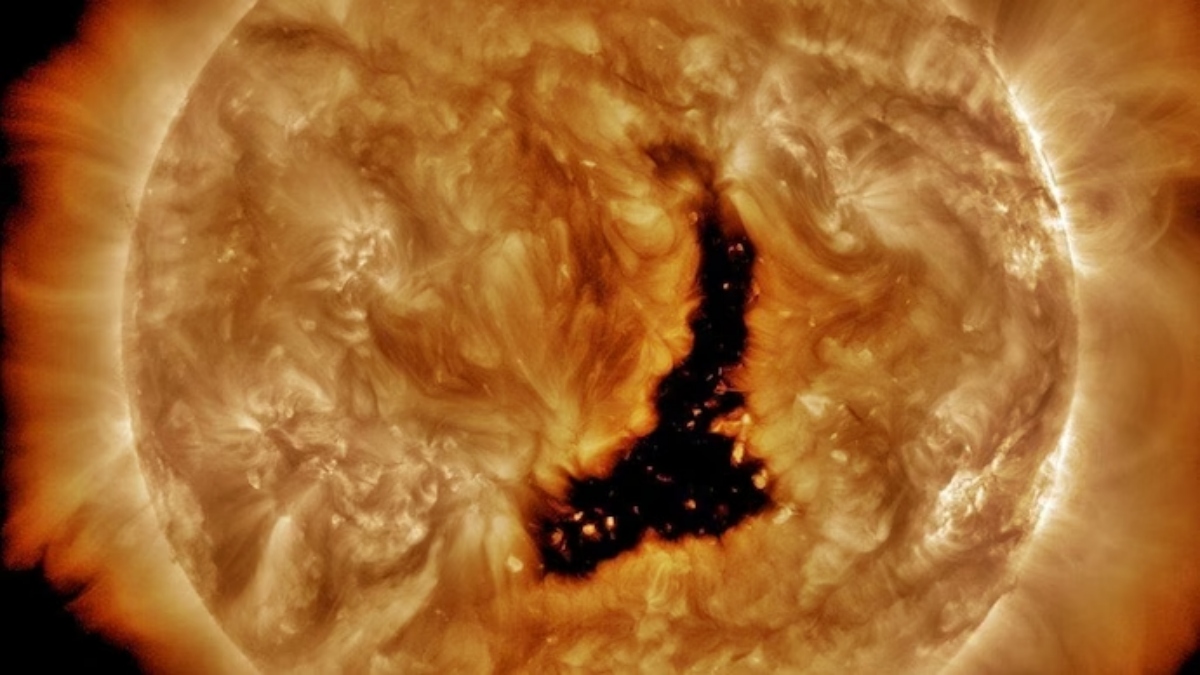Scientists have detected a significant solar anomaly—an expansive hole located along the Sun’s equator. Unveiled on December 2, 2023, this anomaly swiftly broadened to a staggering 800,000 kilometers within a mere 24 hours, equal to 60 times the Earth’s diameter. Initially deemed transitory, its abrupt and substantial expansion has left scientists both puzzled and concerned.
This solar opening, identified as a Coronal Hole, is emitting an immense amount of radiation, rapidly progressing towards Earth. Its trajectory altered over the subsequent 24 hours, pointing directly at Earth by December 4.
Coronal Holes emerge when the Sun’s magnetic field, responsible for its stability, undergoes an unexpected rupture. This rupture forms a distinctive dark cavity, with the region where the Sun interacts with hot helium momentarily relocating. Consequently, this triggers an outpour of intense and swift radiation.
Sunspots, appearing as dark spots on the Sun’s radiant surface, necessitate ultraviolet light for visibility. The radiation emanating from these spots surpasses the speed of conventional solar wind.
The duration of the current coronal hole’s existence remains uncertain. Contrastingly, the previous occurrence persisted for 27 days. NASA anticipates a forthcoming shift in its position, diverting away from Earth, presenting a favorable outcome for our planet.
Also Read: Prime Suspect In Karni Sena Chief’s Murder Killed, Assailants Still Absconding













